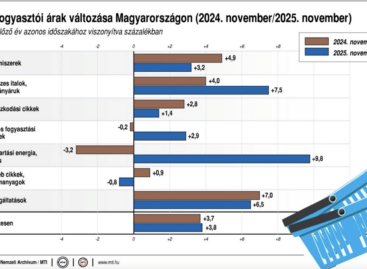GKI: Road to “economic neutrality”: Declining West?
The global economic and geopolitical analyzes of recent years are about the changing world order, the rise of new superpowers and new sources of growth, which have a great impact on the government’s economic strategy and foreign relations. At the same time, it is also worth examining their basis, economic growth, before taking any further steps.
At the beginning of the 2010s, the growth of the Hungarian economy, parallel to that of the European Union, lagged behind the growth of the United States. From the mid-1990s, however, Hungarian growth was faster than American and European growth, which was largely due to EU subsidies coming to our country. At the same time, the recovery of the period following the Covid closures fell short of the American level and returned to the same level as the EU level, presumably not independently of the suspension of EU subsidies. From 2010 to 2023, the GDP growth of the Hungarian economy (+38.2%) was slightly ahead of that of the USA (+35.1%), while that of the European Union (+19.2%) and the Eurozone (+16 .3%) was significantly faster. It is important to take into account that it is easier to improve from a lower level.
Due to the higher initial state, although the EU grew at a slower percentage rate than Hungary, the GDP growth measured in dollars per capita was 5,000 dollars for both actors.
Related news
Ministry of Agriculture supports the food industry’s adaptation to new challenges
🎧 Hallgasd a cikket: Lejátszás Szünet Folytatás Leállítás Nyelv: Auto…
Read more >Perceived price increase index remains high
🎧 Hallgasd a cikket: Lejátszás Szünet Folytatás Leállítás Nyelv: Auto…
Read more >Companies are getting tired, individual entrepreneurs are getting stronger – October company trend in light of the new tax package
🎧 Hallgasd a cikket: Lejátszás Szünet Folytatás Leállítás Nyelv: Auto…
Read more >Related news
The Hungarian Confederation of Economic Workers also spoke out regarding the inflation data
🎧 Hallgasd a cikket: Lejátszás Szünet Folytatás Leállítás Nyelv: Auto…
Read more >KSH: in November, consumer prices exceeded the values of the same month of the previous year by an average of 3.8 percent
🎧 Hallgasd a cikket: Lejátszás Szünet Folytatás Leállítás Nyelv: Auto…
Read more >In addition to jelly and marzipan Christmas candy, there are more and more specially flavored Christmas desserts on offer
🎧 Hallgasd a cikket: Lejátszás Szünet Folytatás Leállítás Nyelv: Auto…
Read more >






